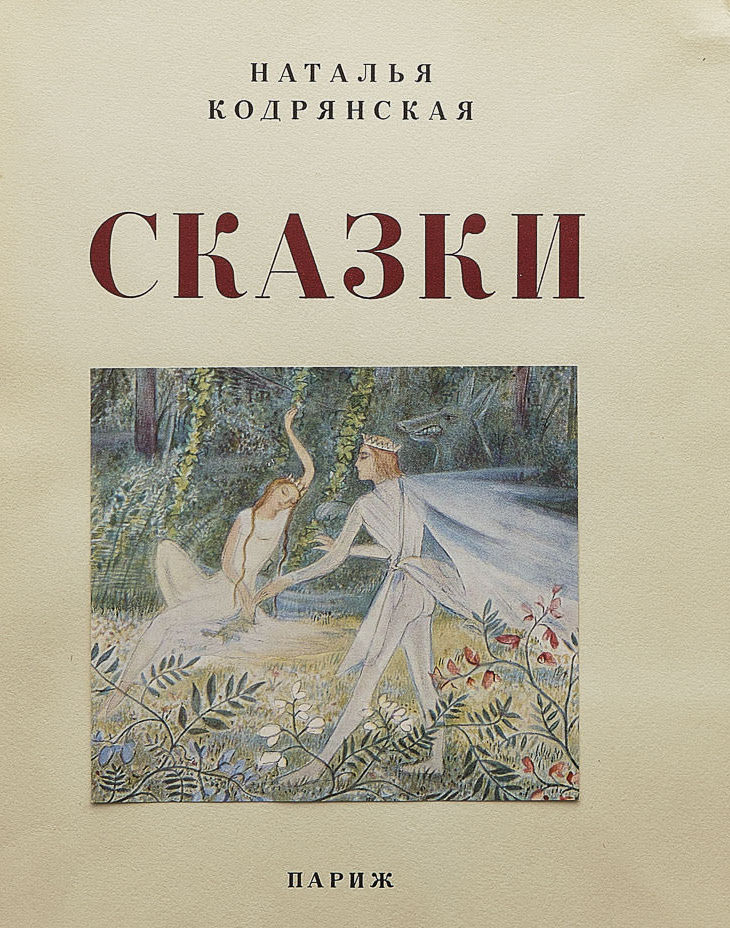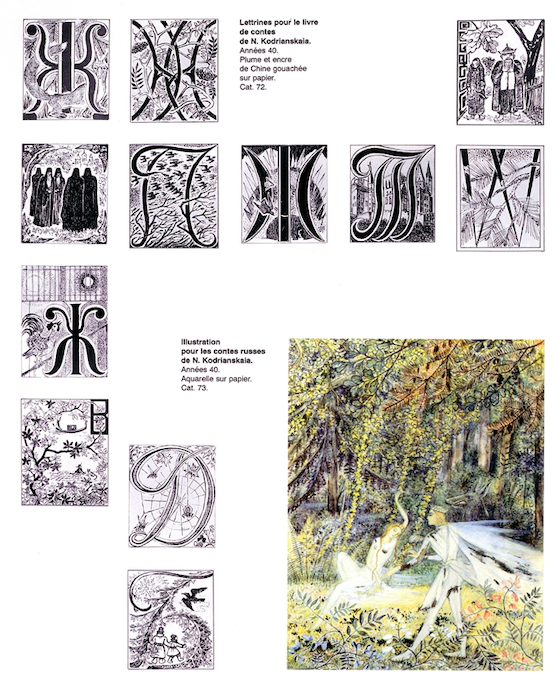KODRYANSKAIA, Natalia (also Natalie CODRAY). Сказки [Fairytales]. — Paris, L’imprimerie Union, 1950.
Octavo (185 x 240 mm). 283 pp., with 16 mounted plates, of which 8 in color.
The edition was published at Kodryanskaia’s expense and was limited to 1000 copies, from which 50 were numbered and printed on Velin d’Arches paper.


This is Natalia Goncharova’s last book illustration project and the first book of Natalia Kodrianskaya’s (1901 – 1983), a children’s writer, literary critic and scholar. After graduating from the Moscow Institute for Noble Maidens, Kodrianskaya emigrated with her family to Geneva in 1919 and then moved to Paris. This book is prefaced by the famous Russian modernist writer and fairytale maker Alexei Remizov reflecting on the role of fairy tales in our lives. Kodrianskaya was a close friend of Remizov and considered herself his pupil.
As Goncharova’s student Tatiana Loguine remembers in her memoirs, Larionov was Goncharova’s impresario since their move to Paris: she kept working in her atelier and he was organizing most of her commissions, but as soon as he got sick everything collapsed. She also notes that Kodryanskaia met Goncharova when Larionov was already ill, quoting the former: “en 1949 je me souviens avec gratitude de la spontanéiste avec laquelle Goncharova accepta d’illustrer des Contes que je venais de terminer […] Quelle délicatesse attentive elle apportait a sa tache d’illustratrice, ne ménageant pas son temps, recréant l’univers féerique des contes”, noting that Larionov also gave some suggestions for the illustrations. The opportunity to return to be a sole artist of a Russian book must have been extremely inspiring for Goncharova after a twenty-year break from this activity.

All her decorative initials stand against an extensive background that looks like independent illustrations on their own, with small animals, flowers or mermaids. Although they all were printed in black and white, they stand out successfully in the book and among the other depictions of decorative initials in her earlier works. Altogether, this book illustration project can be considered as a partial summary of her earlier career and a reconsideration of works by her contemporaries and other artists.
Courtesy of Rene Guerra
Unfortunately, the book was published unnoticed. Parton explains it through the politics: “Cold War conditions denied this work the critical and commercial success it deserved.” However, because Kodryanskaia published the work at her own expense, she did not invest in much publicity and it is not either clear whether she put it for sale. She instead gave out copies with presentation inscription to her friends who later donated these books to libraries worldwide.
- L’art décoratif théâtral moderne
- Samum
- Motdinamo
- Transparent Shadows and Forms
- Twelve. Scythians.
- Gorod (City)
- Conte de Tsar Saltan
- The Russian Ballet in Western Europe 1909-1920
- Tale of Prince Igor
- L’Annonciation: Roman
- Le thé du capitaine Sogoub
- Les Montparnos
- Les Ballets Russes de Serge de Diaghilew
- Skazki (Fairytales)
